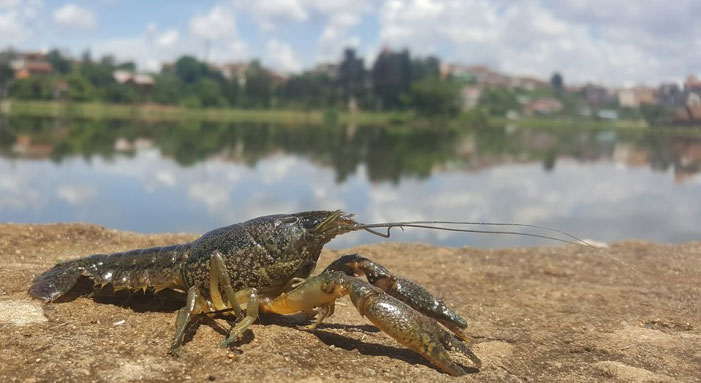Origin and nutritional value of earth lobster
Earth lobster has more than 300 species around the world, is a low-fat protein source with many valuable vitamins and minerals.
Living environment
Earth lobsters evolved from ancestral species in the sea 280 million years ago. Currently, there are more than 300 species in the world, divided into three families: Astacidae and Cambridae (found only in the Northern Hemisphere) and Parastacidae (living in the Southern Hemisphere). Some species are adapted to the tropical environment, but most live in temperate regions, a species of earth lobster that lives in Madagascar in the Indian subcontinent and no species found in Africa.
According to Dr. Bui Quang Te, Research Institute for Aquaculture No. 1, the type of lobster that is being sold in Vietnam is red lobster (Cherax quadricarinatus) . Red lobster belongs to the freshwater crayfish family Parastacidae.

Ground lobster consists of two families distributed in the northern hemisphere and a family distributed in the southern hemisphere.(Photo: Atlantic).
Most of the lobster soil lives under water, often lurking beneath boulders, log sections, mud and aquatic plants. Some burrowing species have air ducts on the ground and spend their lives on the ground, only visible when looking for partners. Other species that live in the cave have been searching in open water. Many species live mainly in water, only snuggling in the cave during pregnancy, need to avoid predators or cold weather.
Shape
Ground lobsters are usually dark green and reddish brown. Their bodies consist of three main parts: the nipple is covered entirely under the crust, the abdomen has 6 burners and the propeller-shaped tail is divided into 5 parts. Five pairs of armored legs with joints are very strong at the head of the chest used to move and burrow. Double eyes help lobster soil look good, except for some species that are blind due to specializing in dark caves. Lobster lobster has two pairs of jaws and three pairs of jaws in the jaw to bring food into the mouth. When threatened, they can swim quickly backwards by snapping the tail at the end of the abdomen.
Reproduction
Ground lobsters usually mate in the fall. Female shrimp release pheromone to attract mates. Using the first belly legs, male shrimp put sperm into a bag in the female shrimp body. Each spawning, female lobster can lay over 400 eggs. Young shrimp hatch in spring and have a shape similar to mature shrimp despite its much smaller size.
Young shrimp adhere to the belly of the mother's shrimp, sometimes they swim a short distance to feed and then swim back to protect the mother shrimp. During this time, the mother shrimp works relatively little and is very active in protecting the offspring from being eaten by the same kind. The mother shrimp communicates with the baby via pheromone, but the young shrimp cannot distinguish their mother and the other female mother-shrimp.
Nutritional value
The presence of earth lobster indicates the water where they live quite clean because most species cannot tolerate polluted water. Lobster lobster looks like a miniature replica of lobster with a length of 8 - 15cm. They are a low-fat protein source with many essential vitamins and minerals.
One kilogram of cooked lobster contains 70 calories and 14 g of protein and a small amount of fat and carbohydrates, 115 milligrams of cholesterol. In the ground lobster meat also contains vitamins B12 and B6 necessary for the nervous system, liver, eyes, skin and hair. Ground lobster is also a rich source of phosphorus, magnesium and zinc, which helps strengthen bones and teeth, supports the activity of muscles and nerves, promotes wound healing and enhances immune function.
- The truth about the lobster species
- America: Found huge lobster land never seen
- Lobster lobster 4 is rarely seen
- Lobster grows again in a month
- Decode the mysterious lobster age
- To boil lobster live: Forget it if you're in Switzerland!
- Rare and precious blue lobster is caught by American fishermen
- Finding lobster has 6 fangs
- Why does American lobster become one of the most luxurious dishes in the world?
- Catching an unusual 2-color lobster in America
- Of the 2 million shrimp, 1 blue lobster was found
- Rare and precious 'lobster' found on the coast
- 70-year-old giant lobster
 Animal 'suffering' after hibernation
Animal 'suffering' after hibernation Why do goats climb well?
Why do goats climb well? Scientists were surprised to see chimpanzees eating turtles
Scientists were surprised to see chimpanzees eating turtles Giant catfish died deadly due to drought in Thailand
Giant catfish died deadly due to drought in Thailand